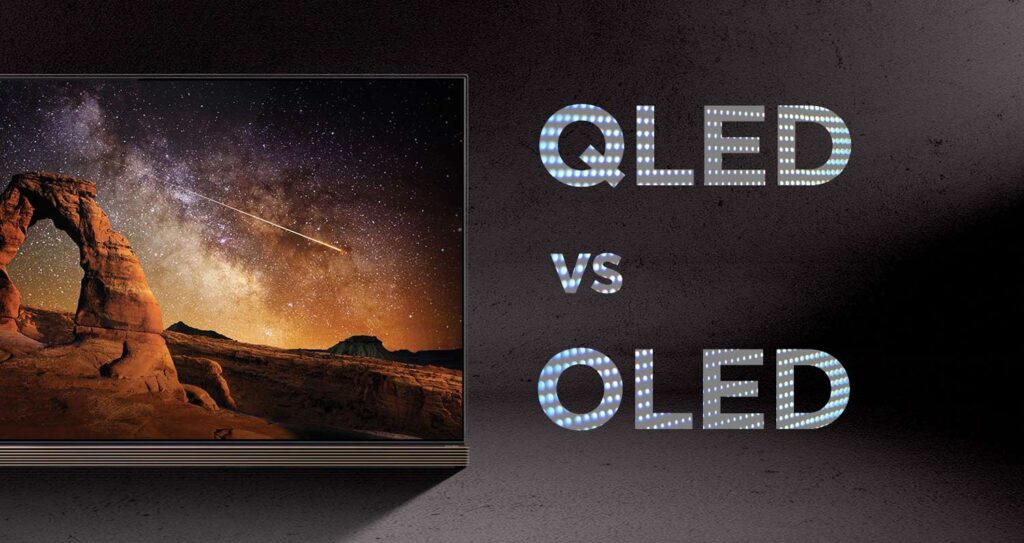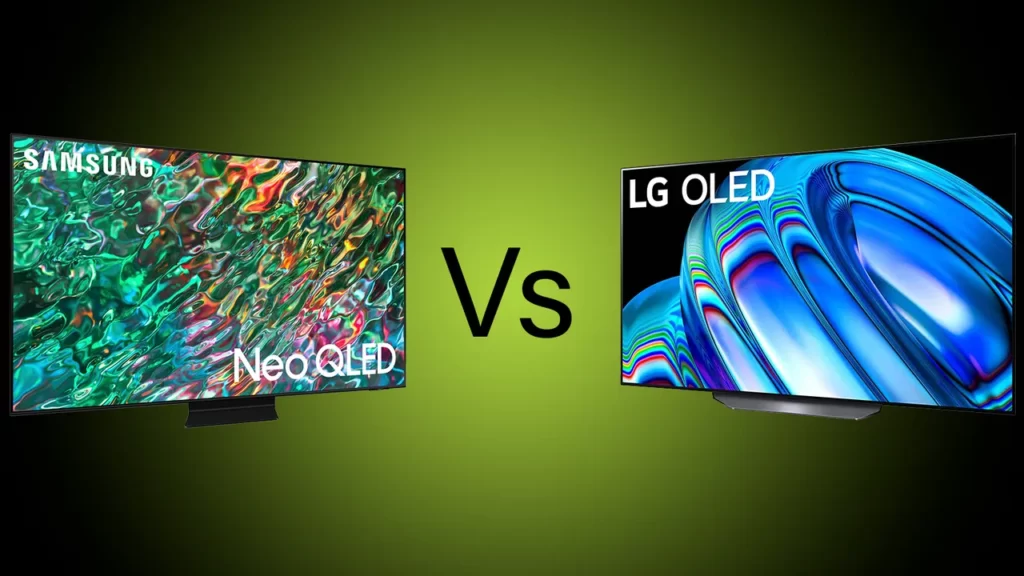QLED vs. OLED TVs: Which Is the Better Option? 2023

QLED and OLED are two different display technologies used in the television industry. Each of these technologies has its own unique advantages and disadvantages.
QLED stands for “Quantum Dot Light Emitting Diode” and is an LED-based display technology. In this technology, the LED lights behind the screen are filtered by small semiconductor crystals called “quantum dots.” Quantum dots can be produced in different sizes, and different-sized crystals enable the production of different colors. Thus, QLED displays can offer a wider color gamut and higher brightness levels. However, the disadvantage of this technology is high energy consumption and some image quality issues.
OLED stands for “Organic Light Emitting Diode” and is a display technology made from organic materials. In this technology, each pixel has its own organic LED light source. This allows OLED displays to offer deeper blacks and higher contrast ratios. Additionally, the fact that OLED displays are thinner and more flexible is also an advantage. However, the disadvantage of this technology is concerns about the long-term durability of the display.
Overall, OLED displays have better black levels and contrast ratios, while QLED displays offer a wider color gamut and higher brightness levels. However, both technologies have their own advantages and disadvantages, and the preferred technology depends on the user’s needs and budget.

Is OLED better than QLED?
It is difficult to say whether OLED is better than QLED, as both technologies have their own advantages and disadvantages.
OLED displays are known for their excellent black levels and contrast ratios, as each pixel has its own organic LED light source. They are also thinner and more flexible than QLED displays. However, there are concerns about their longevity, as they are susceptible to burn-in and image retention.
QLED displays use LED backlights filtered through tiny quantum dots, which can produce a wider color gamut and higher brightness levels than OLED displays. However, they tend to consume more energy and may have some issues with image quality.
Ultimately, the choice between OLED and QLED will depend on individual preferences and needs, as well as budget constraints. Both technologies have their strengths and weaknesses, and consumers should consider these factors carefully before making a decision.
Is OLED worth the extra money?
Whether OLED is worth the extra money depends on your personal preferences and budget. OLED displays generally offer superior black levels and contrast ratios compared to QLED and other LCD-based displays. They also have wider viewing angles and are typically thinner and lighter. However, OLED displays can be more expensive and are more susceptible to burn-in, which can occur when static images are displayed for extended periods.
If you prioritize picture quality and are willing to pay more for it, then OLED may be worth the extra money. However, if you are on a tighter budget or plan to use your TV for gaming or other activities that may involve static images, then a QLED or other LCD-based display may be a better choice. It’s also worth noting that both OLED and QLED displays have their own advantages and disadvantages, so it’s important to consider your specific needs and preferences when making a decision.